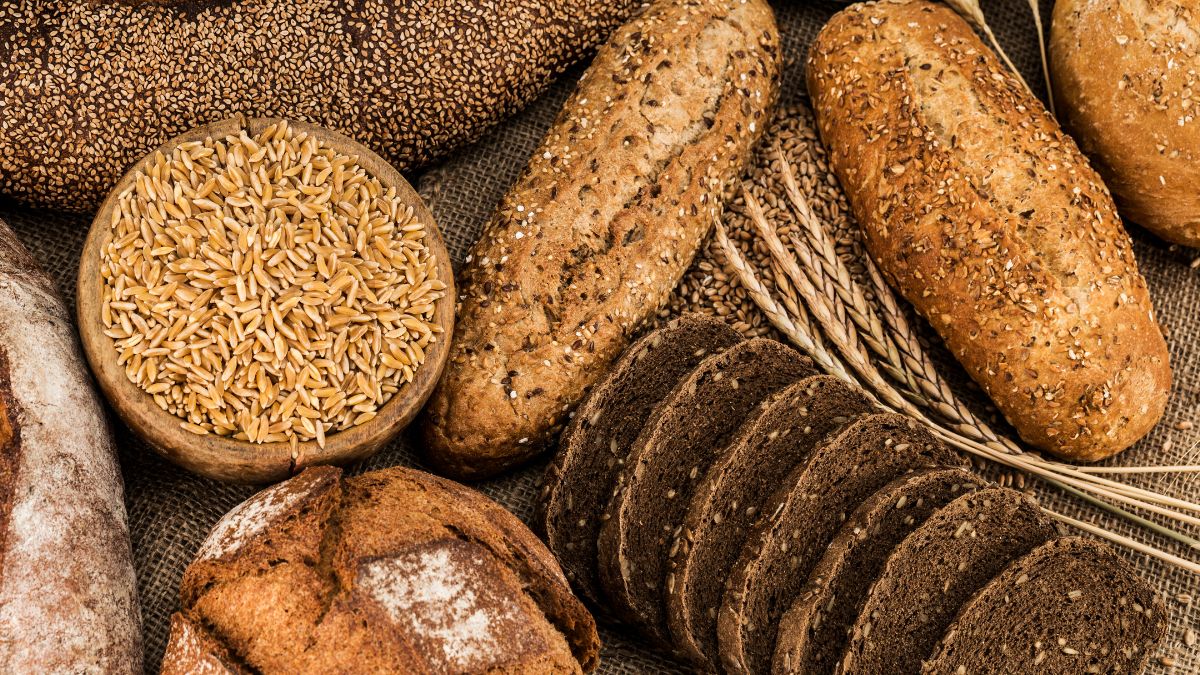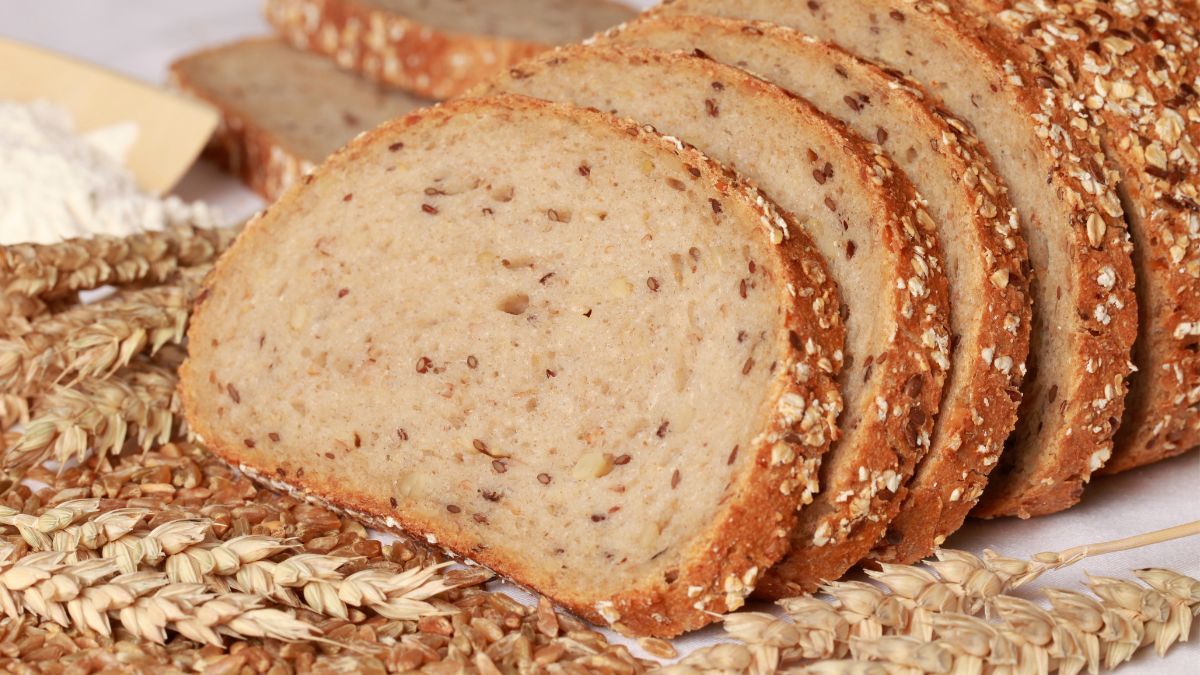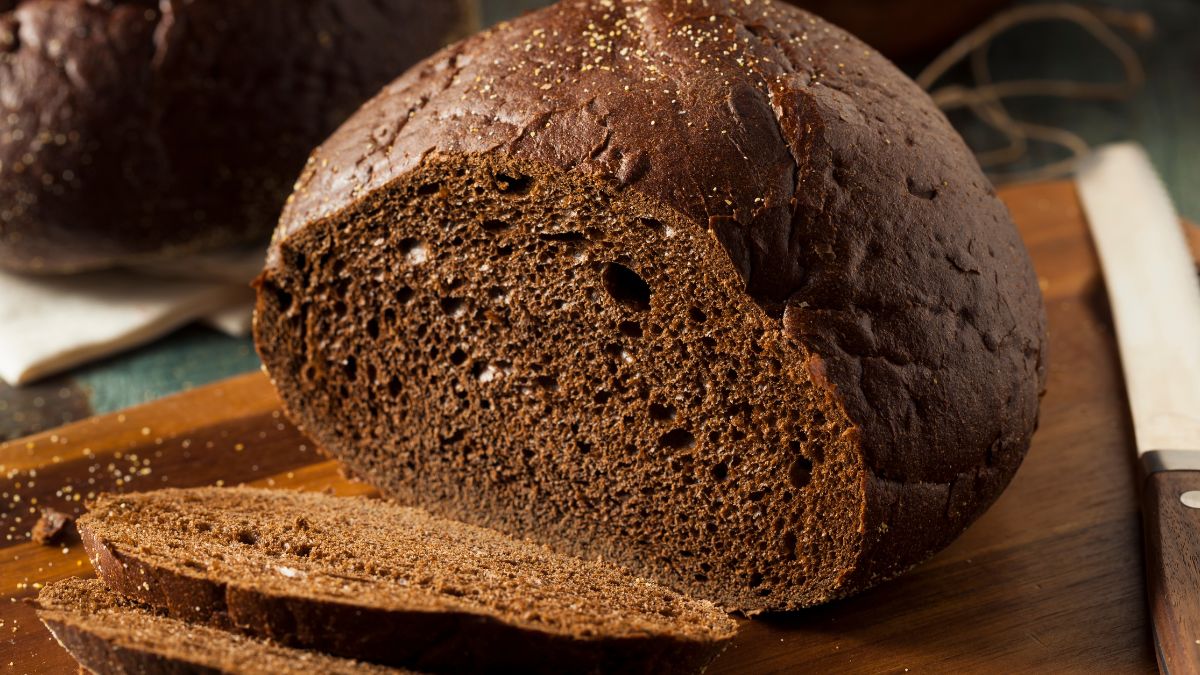5 Brown Bread Types You Have to Try!

Have you ever noticed how most people gravitate towards the standard white and wheat bread options at the grocery store or bakery? Don’t get me wrong, those choices are totally fine and serve their purpose. But if you’re anything like me, you crave adventure in your carb consumption and love discovering new flavors and textures. This is why I’m excited to share a few of my favorite brown bread types.
Beyond pumpernickel and rye, a whole world of hearty, wholesome loaves is waiting to be tasted. Anadama bread, Boston brown bread, malt loaf, Irish soda bread, whole wheat bread, marbled rye, Borodinsky, sourdough, and pumpkin bread are just some of the best brown types of bread that will amaze you.
Whether you prefer nutty notes, subtle sweetness, or an extra dose of fiber, these seven delicious brown bread types will satisfy your senses and surprise your taste buds. Are you excited to read all about them?
Whole Wheat Bread

Whole wheat bread has always been one of my favorites. It’s hearty, delicious, and made from nutritious whole wheat flour.
Whole wheat flour is made by grinding up the entire wheat kernel, including the bran and germ, so it retains more nutrients like fiber, B vitamins, and minerals than regular white flour. Eating whole wheat bread can help reduce heart disease risk and may even help with weight management. [1]
Whole wheat bread’s nutty, robust flavor pairs well with so many foods. I love topping it with peanut butter and bananas, avocado mash, or hummus and veggies. It’s also ideal for sandwiches with sliced meats like turkey, chicken, or roast beef.
To make whole wheat bread at home, use bread flour or all-purpose flour and substitute at least half of it with whole wheat flour. You may need to add a bit more liquid since whole wheat flour absorbs more moisture. Molasses or honey also enhances the flavor.
Knead the dough thoroughly, let it rise, then shape it into a loaf and let it rise again before baking. The result is a hearty, wholesome bread that’s perfect for breakfast, lunch, or dinner.
Whole wheat bread may be a bit denser than regular white bread, but its rich nutty flavor and nutritional benefits make it worth discovering.
Rye Bread
Rye bread is one of my favorite brown breads. It has a dense, chewy texture and a tangy, nutty flavor that comes from rye flour.
Rye flour is made from rye berries, which are small grains closely related to wheat. However, rye flour contains less gluten than regular wheat flour, so rye bread tends to be heavier and denser. The sourdough starter used in rye bread also gives it a characteristic sour taste that complements the nutty, earthy flavor of the rye flour.
To make rye bread, the rye flour is mixed with a sourdough starter and yeast to help it rise. Molasses or brown sugar are often added to encourage yeast and provide food for the sourdough bacteria. Caraway or sunflower seeds are also commonly sprinkled on top or mixed into the dough to add extra flavor and crunch.
The dense, chewy texture of rye bread means it holds up well to hearty toppings like corned beef, pastrami, and sauerkraut, while it’s also delicious topped with butter, cream cheese, or your favorite jam or marmalade. Rye bread contains fiber, B vitamins, and minerals like selenium, magnesium, and phosphorus. [2]
Pumpernickel Bread

Pumpernickel bread has such a robust, molasses-like flavor thanks to the coarse rye flour it’s made from. The flour is much darker in color than regular wheat flour, giving the bread its characteristic dark brown hue.
Rye flour is less glutenous than wheat flour, so pumpernickel bread is denser and more crumbly in texture.
In addition, caraway and coriander seeds are often added to pumpernickel bread, providing an aromatic nutty, and almost citrusy flavor.
What really sets pumpernickel apart is its long fermentation process. The dough rises for up to 24 hours, allowing complex flavors to develop as the natural yeasts and bacteria go to work.
This extended fermentation is what gives pumpernickel its distinctive sourdough-like tang. The bread is then baked for a long time at a low temperature, resulting in an almost molasses-like sweetness.
Sourdough Bread
Sourdough bread has a tangy, robust flavor from wild yeasts and bacteria fermentation. The long, slow fermentation process creates lots of bubbles that give sourdough its characteristic open-crumb structure and chewy texture.
Sourdough bread has been made for thousands of years. Miners during the California Gold Rush of the mid-1800s relied on sourdough starters, some of which are still maintained today. A starter is made from flour, water, and wild yeasts. You feed it with more flour and water, and over time, it develops a complex flavor from the yeasts and Lactobacillus bacteria.
Baking sourdough bread requires patience, though. It can take days for a starter to ferment and proof the dough. But the wait is worth it for the fantastic taste.
The slow fermentation helps develop the sourdough flavor and allows enzymes to break down starches into simple sugars. The yeast feeds on the sugars, producing carbon dioxide gas that forms the bubbles.
You can even bake it in a glass dish, and here’s how!
Pumpkin Bread

Pumpkin bread is one of my all-time favorite fall treats! This hearty, spicy bread is perfect on a chilly autumn day and fills your home with the comforting aroma of cinnamon, nutmeg, and pumpkin.
The ingredient list for pumpkin bread is relatively short and straightforward: Flour, sugar, eggs, pumpkin puree, oil or melted butter, and spices like cinnamon, ginger, nutmeg, and cloves. Some recipes also call for chopped nuts like walnuts or pecans to add extra crunch.
Making pumpkin bread is really relatively easy as well. Just combine the dry ingredients in a large bowl, then whisk together the wet ingredients in a separate bowl: eggs, pumpkin, and oil.
Add the wet ingredients to the dry ingredients and stir until just combined. Be careful not to overmix, or the bread can become dense. Pour the batter into a greased loaf pan and bake at 350 °F (180 °C) for about 50-60 minutes, until a toothpick inserted into the center comes out clean.
Which of these have you not tried yet? When you do try it out, let me know in the comments below. I can’t wait to read all about your brown bread adventures!
